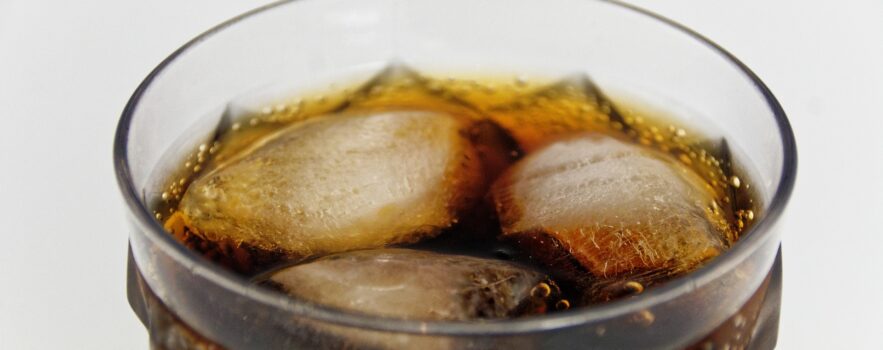An analysis of 11 years of data from the UK National Diet and Nutrition Survey has found that daily free sugar intake fell by around 5 g in children and by around 11 g in adults following the announcement of the UK’s Soft Drinks Industry Levy (SDIL) in 2016. This fall was additional to pre-existing downward trends in the intake of dietary free sugar in adults and children.
The analysis was co-led by Dr Nina Rogers and Professor Jean Adams at the MRC Epidemiology Unit, and is published online today in the Journal of Epidemiology & Community Health.
Decreased sugar from soft drinks alone made up over half this total decline in free sugar consumption. However, overall daily energy intake from free sugars levels are still higher than the updated recommendation from the World Health Organisation (WHO) of 5%, equivalent to 30 g/day for adults, 24 g for 7–10 year olds, and 19 g for 4–6 year olds.
Mounting evidence implicates consumption of sugar sweetened drinks, which are a major source of dietary free sugars, particularly among children, in a heightened risk of weight gain, type 2 diabetes, coronary heart disease and premature death. To date, more than 50 countries have introduced a sugar tax on soft drinks in a bid to persuade manufacturers to reformulate their products, with the UK doing so in 2018 with the SDIL.
While the evidence suggests that sugar intake derived from these drinks fell in the year following its introduction, it’s not clear whether other sources of dietary sugar were substituted instead.
To assess the impact of the levy on total sugar intake, the researchers drew on 11 years of responses (2008–19) to the annual nationally representative UK National Diet and Nutrition Survey. This captures information on food consumption, nutrition, and nutrient intake in and outside of the home from 500 adults and 500 children over a 4-day period.
The researchers looked particularly at absolute and relative changes in total intake of dietary free sugars from all food and soft drinks combined and from soft drinks alone, to include full and low calorie soft drinks; semi-skimmed, whole and skimmed milk; fruit juice; and other milk drinks and cream.
Protein intake was used as a comparator because although not subject to a levy, it could still be affected by influential factors such as increases in food prices, say the researchers.
The results draw on information for 7999 adults and 7656 children, and estimated changes in free sugar consumption are based on the period January to March 2019 and compared with what would be expected had no sugar tax been announced and implemented.
Taking into consideration existing trends in free sugar consumption, the survey responses indicated that 1 year after the SDIL had come into force children had further reduced their free sugar intake from food and drink combined by around 5 g/day (relative reduction of 10%) and adults by around 11 g/day (relative reduction of 20%).
Over half of this total was from soft drinks alone, accounting for around 3 g/day (relative reduction of 23.5%) in children and around 5 g/ day (relative reduction of just under 40.5%) in adults. Protein intake remained stable throughout in children and adults.
In children, a daily reduction of 4.8 g free sugar equates to approximately 19.2 kilocalories out of an approximate daily intake of 2000 kilocalories which is equivalent to approximately 1% reduction in energy intake.
Energy intake from free sugars as a proportion of total energy consumed didn’t change significantly following the the introduction of the levy, indicating energy intake from free sugar was reducing at the same time as overall total energy intake, and suggesting that people didn’t change their diets substantially by substituting more sugary foods and drinks, say the researchers.
It wasn’t possible to study different age groups due to the limited number of participants, but falls in the levels of sugar in food and drink may have affected different age groups differently, say the researchers. For example, the largest single contributor to free sugars in 4–10 year olds is cereal and cereal products, followed by soft drinks and fruit juice. By the age of 11–18, soft drinks provide the largest single source (29%). For adults the largest source of free sugars is sugar, preserves, and confectionery, followed by non-alcoholic drinks.
Reference
- Nina Trivedy Rogers et al. Estimated changes in free sugar consumption one year after the UK soft drinks industry levy came into force: controlled interrupted time series analysis of the National Diet and Nutrition Survey (2011–2019). Journal of Epidemiology & Community Health DOI: 10.1136/jech-2023-221051

 MRC Epidemiology Unit
MRC Epidemiology Unit